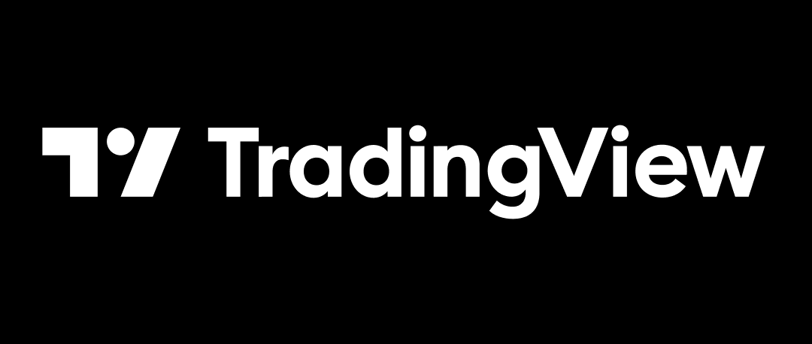TradingView: Your One-Stop Shop for Technical Analysis
The Worlds Best Charting Platform
Harrison Uwah
3/22/2024


Introduction
For aspiring and seasoned traders alike, navigating the ever-changing financial landscape requires a robust set of tools. TradingView emerges as a frontrunner, offering a comprehensive platform specifically designed for technical analysis. Whether you're trading forex, stocks, or futures, TradingView empowers you to dissect market movements, identify trading opportunities, and refine your strategies. This guide delves into the key features of TradingView, transforming you from a curious newcomer into a confident chart-wielding trader.
Charting Paradise: Customisation at Your Fingertips
At the heart of TradingView lies its intuitive charting interface. You can choose from various chart types, including line charts, candlesticks, and Heikin Ashi, to best visualise price movements. The platform allows extensive customisation, enabling you to adjust timeframes (from seconds to months), add indicators (more on that later!), and overlay multiple charts for comparative analysis.
A Sea of Indicators: Unveiling Market Secrets
TradingView boasts a vast library of technical indicators, from the moving averages and relative strength index (RSI) to more obscure tools like the Klinger oscillator and the Alligator indicator. I personally like to use a blank chart with no indicators and let price action alone tell me where price is going. However, if this is part of your trading routine there are many to choose from. Some people like to use indicators to help gauge momentum, identify potential trend reversals, and measure overbought or oversold conditions. Don't be overwhelmed by the sheer number of options – start with one, learn how it works, and see whether it works for you. Remember, you don't have to use trading indicators to understand what is going on with price.
Drawing Tools: Paint Your Trading Story
TradingView provides a rich set of drawing tools, allowing you to annotate charts and visualise your trading ideas. Trendlines help identify area of liquidity and inefficiencies, while Fibonacci retracements can highlight areas of discount or premiums and potential price targets. Chart patterns, like double tops, double tops and retail trendlines, become easier to spot with the help of these drawing tools. Remember, drawing tools are subjective, and their effectiveness depends on your experience and analysis.
Market Replay: Learning from the Past
One of TradingView's hidden gems is the ability to replay historical market data. This feature allows you to step back in time and analyse past price movements on any chart. It's a fantastic tool for testing your trading strategies on historical data to see how they would have performed. Experiment with different indicators, drawing tools, and entry/exit points in a risk-free environment before deploying your strategy in the live market.
Paper Trading: Putting Theory into Practice
TradingView offers a paper trading feature, simulating a real-life trading experience without risking real capital. This allows you to test your strategies in a live market environment with virtual funds. It's an excellent way to gain confidence, refine your approach, and manage your emotions before venturing into the world of real trades.
Collaboration and Education: A Community of Traders
The TradingView community is a valuable resource for both beginners and experienced traders. You can share your chart analysis, discuss trading ideas with others, and learn from seasoned veterans. The platform also offers a wealth of educational resources, including webinars, articles, and video tutorials, to enhance your trading knowledge.
You can join the 40,000 TTTM community by subscribing to our Youtube channel.
Beyond the Basics: Advanced Features for the Discerning Trader
TradingView caters to advanced traders as well. Features like pine script, a custom scripting language, allow you to create your own indicators and strategies. This level of customisation empowers experienced traders to tailor the platform to their unique needs. Additionally, integration with various brokers enables seamless order execution directly from the TradingView interface.
A Final Note: A Tool, Not a Holy Grail
While TradingView is a powerful platform, it's important to remember that it's a tool, not a guaranteed path to riches. Successful trading requires a combination of technical analysis, fundamental understanding of the markets you trade, and sound risk management practices. Use TradingView to enhance your analysis, not replace your due diligence and risk management strategies.
For a visual breakdown on how to use TradingView watch this video How to Use TradingView For Beginners.
Take Charge of Your Trading Journey
TradingView offers a comprehensive and user-friendly platform for traders of all levels. By mastering the features explored in this guide, you'll be well-equipped to navigate the financial markets with greater confidence and potentially make informed trading decisions. Remember, consistent practice, continuous learning, and disciplined risk management are the cornerstones of successful trading. So, dive into TradingView, unlock its potential, and chart your own path to trading success.
More resources:
Beginner friendly forex videos: Forex Trading For Beginners - Understanding Risk To Reward
Forex Beginner Course: The Forex Trading course i wish I had when i first started trading.
Scalping Course: High return low risk scalping strategy for forex and indices market.
Forex Mentoring: For guidance through the charts Monday to Friday through chart analysis, Q&A's and Team calls.
*Disclaimer: The information contained in this presentation is solely for educational purposes, and does not constitute investment advice. The risks of trading in securities, Forex, and the futures market can be substantial. You should carefully consider if engaging in such activity is suitable to your own financial situation. The instructor in this video is not responsible for any liabilities arising as a result of your Market involvement or individual trade activities.*
Follow
Our mission is to simplify the world of trading and give you the right information so you can start to make money through trading.


Terms and Conditions
©2024. All rights reserved
